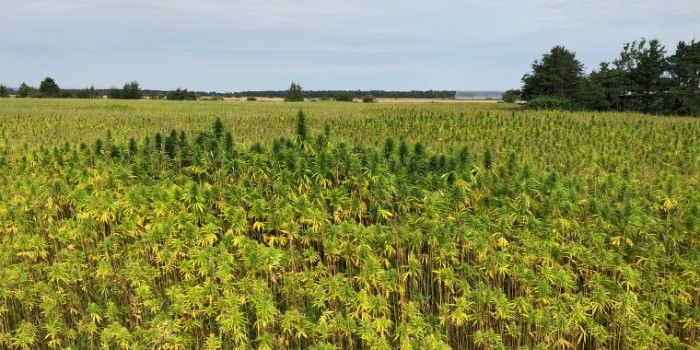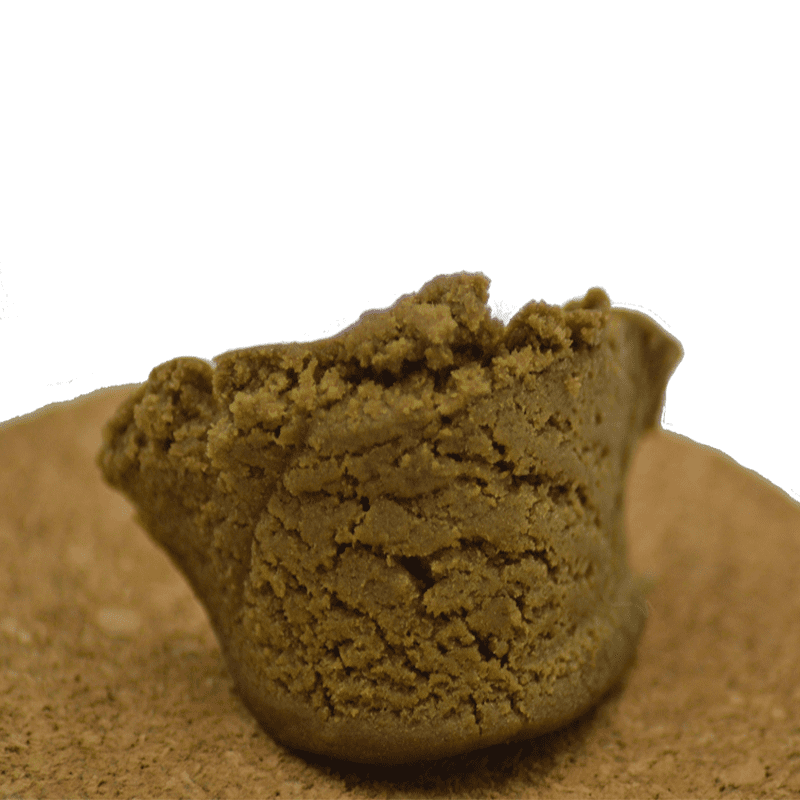La CBD resin is a concentrated form of cannabidiol (CBD), one of the many chemical compounds found in cannabis. Unlike tetrahydrocannabinol (THC), a well-known compound in the cannabis for its psychoactive effects CBD does not induce such effects. Here is some detailed information on CBD resin.
Table of contents
What is CBD resin?
Structure and Properties
OriginCBD resin is generally extracted from cannabis or hemp. Hemp is often preferred because it contains a very low THC content, ensuring that the final product does not cause psychoactive effects.
High concentrationCBD resin is sticky, dense and concentrated, containing a higher CBD content than other products such as oils or tinctures.
No Psychoactive EffectsUnlike THC, CBD has no psychoactive effects and does not alter users' perceptions.
Extraction methods
CBD resin is produced by extracting cannabinoids from cannabis. There are several extraction methods, the most common being :
CO2 extraction: Use of carbon dioxide in a supercritical state to extract CBD without leaving behind toxic solvents.
Solvent extractionUse of solvents such as ethanol or butane to extract CBD. This method can be quick and efficient, but requires precautions to remove all solvents from the final product.
Oil Extraction: Use of vegetable oils such as olive oil for extract CBD. This method is safe and easy to perform, but the extraction efficiency is lower than that of other methods.

Applications and Benefits
Pain ReliefThe CBD resin can be used to relieve pain caused by conditions such as arthritis, muscle aches and nerve pain.
Reducing Anxiety and DepressionMany people use CBD resin to reduce symptoms of anxiety and depression without the need for prescription medication.
Anti-inflammatory: CBD has anti-inflammatory properties and can be used to treat chronic inflammation.
Epilepsy Treatment Support: The CBD resin has been studied and shown to be effective in reducing the frequency of seizures in certain types of epilepsy, such as Dravet syndrome and Lennox-Gastaut syndrome.
Operating modes h3
In oil formCBD resin can be dissolved in coconut oil or olive oil to create CBD oil.
Direct UseSome people prefer to use CBD resin directly by placing a small amount under the tongue or mixing it with food.
Topical applicationCan be mixed with creams or oils for application to the skin, helping to relieve pain and inflammation locally.
Precautions and side effects
Safety: CBD is considered safe for most people when used correctly, although some may experience minor side effects such as fatigue, diarrhoea or taste changes.
Drug interactions: CBD can interact with certain medicines, so users should consult a doctor before use, especially if they are taking other medical treatments.
LegalityThe use and sale of CBD resin may be regulated differently in different countries or states, so users should check the relevant legal regulations before use.
CBD resin manufacturing process
CBD resin is a concentrated product containing a high level of cannabidiol (CBD), extracted from cannabis or hemp. Here are the main stages in making CBD resin:
Selection of raw materials
Hemp/Cannabis selection: The plants chosen must have a high CBD content and a low THC content (less than 0.3 % THC for legal hemp). These plants are often grown organically to avoid harmful chemicals.
Harvesting and drying
Harvesting: Parts of the cannabis or hemp plant, such as flowers, leaves and stems, are generally harvested when the CBD content is highest.
Drying: After harvesting, the plant parts are dried to reduce moisture, making them easier to preserve and prepare for extraction.
Extraction of CBD
There are several methods of extracting CBD, each with its own advantages and disadvantages:
CO2 extraction
The benefits: Clean, safe, with no residual solvents, highly effective for CBD extraction pure.
ProcessUsing CO2 in a supercritical state to extract cannabinoids. The CO2 is compressed and cooled to become a liquid, then used to wash the cannabis, extracting the desired compounds. Finally, the CO2 evaporates, leaving only the concentrated CBD resin.
Solvent extraction
The benefits: Low cost, fast process.
The process: Use of solvents such as ethanol, butane or hexane to dissolve the Cannabis cannabinoids. The solvent is then removed by evaporation, leaving only the CBD resin. However, this method can leave traces of solvent and must be handled with care to remove them completely.
Oil Extraction
BenefitsSafe, easy to carry out, low cost.
The process: Using vegetable oils such as olive oil to extract the CBD. The cannabis is soaked in the oil and heated slightly to dissolve the cannabinoids. However, the final product will have a lower CBD concentration and is not suitable for creating concentrated CBD resin.
Purification of CBD Resin
Impurity filtration: The raw CBD resin is filtered to remove impurities such as waxes, chlorophyll and unnecessary compounds.
Distillation: Use of distillation techniques to concentrate the CBD, eliminate undesirable compounds and purify the CBD. CBD resin to achieve the best possible quality.
Quality Control
Laboratory tests: Samples of CBD resin are sent to the laboratory to test the CBD content. CBD, THC and other substances. The tests also ensure that the product contains no harmful impurities or residual solvents.
Purity TestMake sure the product contains no impurities such as heavy metals, bacteria or mould.
Packaging and conservation
Packaging: CBD resin is packaged in hermetically sealed, light- and air-resistant boxes or bottles for long-lasting storage.
Conservation: The product should be stored in a cool, dry place away from direct light to maintain CBD stability.

Requirements for the Use of CBD Resin
When using CBD resin, there are a number of important requirements and considerations to ensure its effectiveness and safety:
Choosing Quality Products
Verification of Certifications: Choose products certified by independent laboratories for CBD, THC and other substance content.
Checking the ingredients: Make sure the product contains no unnecessary impurities or additives.
Dosage
Start with a Low DoseStart with a low dose and gradually increase according to your needs and your body's reaction.
Consult a doctorConsult a doctor, especially if you are taking medication or have specific health conditions.
Methods of use
Under the tongue: Put a small amount of CBD resin under your tongue and hold for a few minutes to allow the CBD to be absorbed by the mucous membrane.
Mixed with Food/Beverages: CBD resin can be mixed with food or drink for ingestion.
Topical applicationMix the CBD resin with cream or milk. oil to apply to the skinhelping to relieve local pain or inflammation.
Reaction monitoring
Observe side effects: Watch for side effects such as drowsiness, dry mouth, changes in taste or any other unusual symptoms.
Adjust the DosageAdjust the dosage or method of use if you notice any adverse reactions.
Complying with legislation
Checking regulations: Check the legal regulations on the use of CBD resin in your locality or country to make sure they are compliant.
Beware of Travel: When you travel, especially internationally, check whether the transport of CBD-based products is legal to avoid legal problems.
Conclusion
CBD resin is a concentrated product with a high cannabidiol content, widely used for medical and health support purposes. It has no psychoactive effects and can help reduce pain, anxiety, inflammation and a range of other conditions. However, users should be aware of drug interactions and legal regulations when using this product.
The production process for CBD resin requires meticulous and rigorous steps to guarantee the quality and safety of the final product. When using CBD resin, it is essential to choose a quality product, follow the dosage and monitor the body's reactions, while ensuring compliance with current legal regulations.

